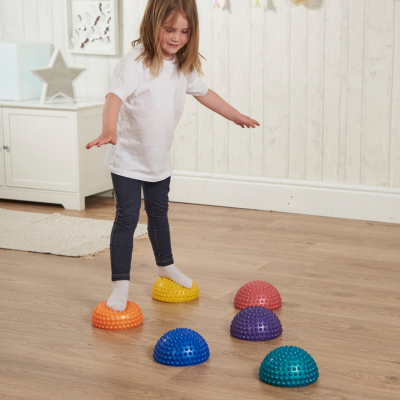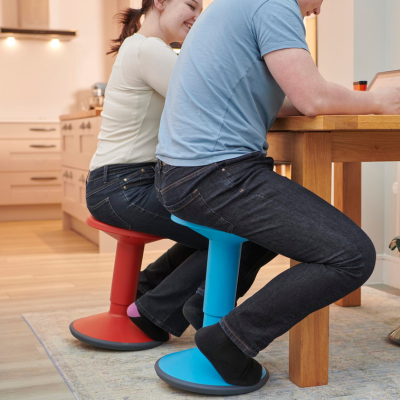Why Does My Child Struggle With Balance?
This month we look at the question "why does my child struggle with balance?" Good balance skills are often something we take for granted. Getting dressed in the morning, walking down the stairs, going to the toilet and even playing all require good balance skills. It is well documented that autistic children and adults often have difficulties with balance and coordination.
In this blog we'll explore why your child might struggle with balance, the importance of good balance skills and easy ways to improve them at home.
Why does my child struggle with balance?
Your child may struggle with balance for several reasons. One possible reason could be linked to the vestibular system. The Autism Together website explain that "the vestibular system is located in our inner ears. It helps to regulate our sense of balance and body control. When it isn't working typically, autistic people can be seriously affected. It can impede their understanding of what is happening to them and the world around them," (visit www.autismtogether.co.uk for more information).
Physical factors such as delayed motor development and coordination also affect balance. Skills such as walking, running and jumping, might develop later than in neurotypical children, resulting in difficulties with activities requiring good balance.
We also overlook other skills required for good balance, such as concentration and focus. If your child has difficulties maintaining concentration, this could impact the ability to focus on balance activities. Some children may have heightened anxiety, and the fear of falling over may put them off engaging.

The Importance of Good Balance Skills
Encouraging your child to engage in more balance activities is so important. It helps improve their physical, cognitive, and emotional well-being.
- Independence and Confidence: Good balance skills allows children to perform daily activities more independently. Things such as dressing, bathing, and moving around the house. This independence boosts their confidence and self-esteem, fostering a sense of achievement and autonomy.
- Enhanced Coordination: Balance training often involves activities that improve coordination and spatial awareness. These skills are critical for children to navigate their environment more effectively. It also enables them to participate in play, and engage in physical activities with greater ease.
- Motor Skill Development: Balance supports the development of other essential skills such as walking, running, jumping, and climbing. Improving balance can lead to enhanced gross and fine motor skills, contributing to overall physical development.
- Emotional Regulation: Engaging in balance activities can help reduce anxiety and stress, contributing to better emotional regulation.
- Social Interaction: Balancing games are ideal to do together. Involving friends and family encourages social interaction. This social engagement is crucial for developing communication skills and fostering relationships.
Practical Ways To Improve Balance
Improving balance skills at home can be great fun for the whole family! There are so many exciting games and resources you can use. Here are some of our favourites.

Therapy Balls
Therapy Balls are fantastic for developing balance, strength and gross motor skills. There are many different activities to do with a them such as;
- Sit on the ball and slowly take your feet off - how long can you stay balanced?
- Play a game of catch whilst sat on the ball - developing core strength as well as balance
- Lie across the ball (on your stomach) - put arms and legs out like a starfish
- Roll the ball back and forth - great for improving coordination and balance

Balance Pods
These 6 knobbly tactile balance pods are great for improving balance, body awareness and co-ordination. The bumpy tactile surface gives good grip and sensory feedback. Set out a course and challenge your child to complete it - great fun and a real confidence builder.

Scooter Boards
Scooter Boards are great for upper extremity strengthening, movement and vestibular activities. They also help to encourage balance and motor planning.
There are so many ways you can use a scooter board - these are some of our favourites!
- Body Bowling- set up bowling pins at one end of the room. Have your child ride the scooter board down to knock them over.
- Fishing - scatter magnetic fish around the floor and ask your child to go find them all.
- Create an obstacle course of things you need to scoot around.

Wobble Stools and Cushions
Wobble cushions and stools are one of our best-selling resources. Not only do they help improve balance, but they can be used in so many scenarios to help boost focus and concentration.
Use a wobble cushion on a chair at the table to encourage 'active sitting' whilst eating or drawing. Once the activity is complete, have sensory break and put the cushion on the floor. Get your child to stand on it and practise balancing - how long can they balance without falling over? Fun, simple and versatile.
Conclusion
Fostering good balance skills in children supports their overall development, helping them lead healthier, more active, and more fulfilling lives.







